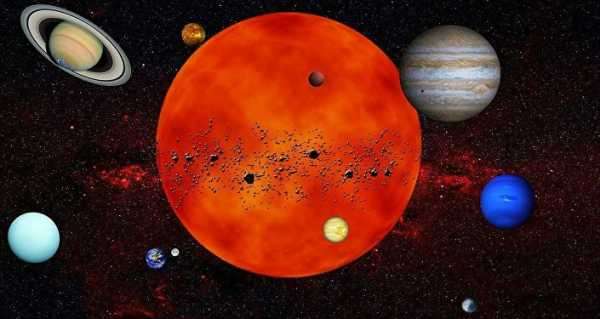
It has been suggested that Earth, which is currently the only liveable planet we are aware of, was previously not so unique, having enjoyed some of the same atmospheric features as its rocky neighbours.
An international team of researchers who conducted an in-depth evaluation of the atmospheres on ancient Earth and Venus, have concluded that although the planets started out similarly, it is their proximity to the Sun that made them different. An abstract for their research paper was published in Science Advances and was first reported on by The Conversation.
The late stages of accretion were found to involve giant impacts that released torrents of energy, with the last impact involving a Mars-sized embryo . It hit the expanding Earth, researchers suggest, and left our planet covered with overwhelming masses of molten rock, a “magma ocean.”
The “magma ocean” would have then leaked oxygen, hydrogen, carbon and nitrogen gases, to form Earth’s first atmosphere – a crucial factor for the birth of life.
Researchers studied what kind of atmosphere would have evolved, and how it would have changed as it and the magma beneath it cooled down.
Having analysed numerous samples of the mantle brought to the Earth’s surface by tectonic movements or through volcanic activity, the team now believes that, with abundant oxygen, the atmosphere would have been made of a much friendlier mix of gases: carbon dioxide (CO₂), water vapour (H₂O) and molecular nitrogen (N₂). They determined it was built up of CO₂ and H₂O. Nitrogen, for its part, would have come in its elemental form (N₂) rather than as the toxic gas ammonia (NH₃).
The early Earth eventually cooled enough for the water vapour to condense completely out of the atmosphere, forming oceans of liquid water, and making a ratio of 97% CO₂ and 3% N₂. The latter appears to coincide with the present conditions on Venus, yet it still retains its toxic environment that is incompatible to carbon-based life.
The problem is, the researchers argue, that Venus travels much too close to our star.
The second planet from the Sun simply never cooled down enough to give birth to masses of liquid water, making the H₂O in the atmosphere stay longer. Water vapour then slowly but steadily traveled into space, while on the early Earth, oceans drew down CO₂ from the atmosphere via a reaction with rock known as the “Urey reaction”, named after the Nobel prizewinner Harold Urey, who first detected it.
Sourse: sputniknews.com






